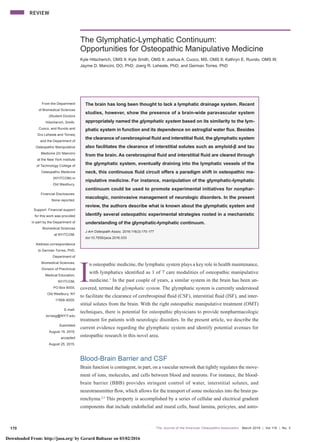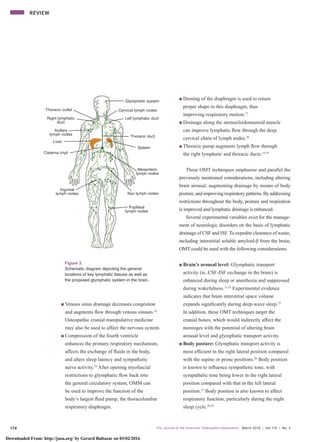This document discusses the glymphatic system's role in brain health and its parallels with the lymphatic system, highlighting its importance in clearing cerebrospinal fluid and interstitial solutes, including potentially harmful proteins. The authors propose the use of osteopathic manipulative treatment (OMT) techniques to enhance glymphatic drainage, presenting a novel nonpharmacologic approach to managing neurological disorders. It outlines several experimental strategies for further research in osteopathic medicine related to the glymphatic-lymphatic continuum.







